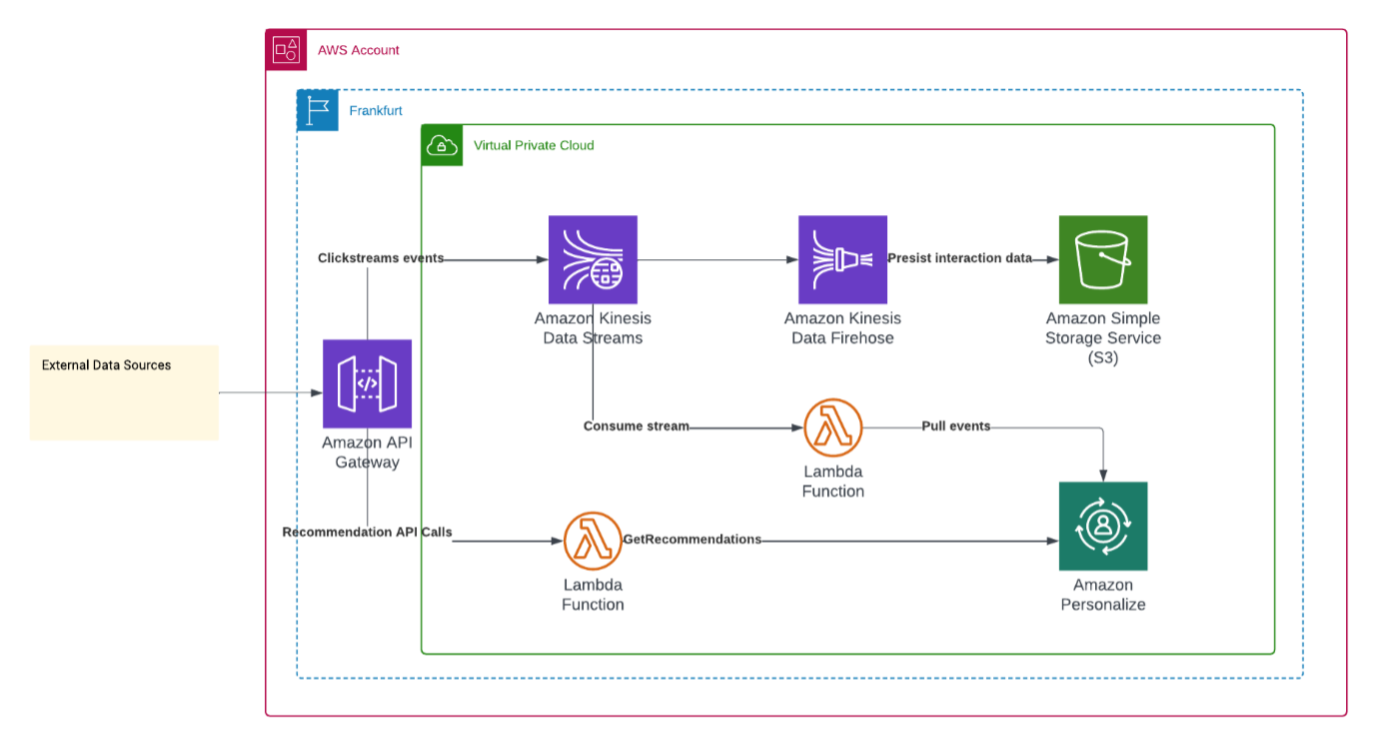Business challenge
The e-commerce platform had reached a critical point in its digital growth journey. For years, it relied on static, search-based recommendations and manual merchandising rules that offered the same product suggestions to every visitor. The technology worked — but only up to a point.
As traffic and product catalogs grew, the cracks began to show. The system couldn’t adapt to changing user behavior, and every update required manual intervention. Different environments ran on disconnected infrastructure making performance unpredictable and maintenance costly.
Marketing teams were eager to deliver personalized, real-time experiences, but the data was scattered across systems, making it impossible to understand how users interacted or what they truly wanted. Developers were forced to maintain brittle integrations instead of innovating.
The business needed to evolve: to understand every click, view, and purchase in real time — and to transform that insight into tailored product recommendations that could drive engagement, conversion, and customer loyalty at scale.
Solution
Cloud Softway designed a cloud-native personalization platform on AWS, centered around Amazon Personalize, to deliver intelligent, data-driven recommendations at scale.
The platform was architected to ingest real-time customer behavior, train and retrain recommendation models automatically, and serve low-latency results directly to the website and mobile app.
High-Level Architecture
-
Event Streaming Layer:
- User interactions (product views, clicks, cart actions, purchases) are captured via a lightweight API layer built on Amazon API Gateway.
- These events stream into Amazon Kinesis Data Streams, then batched and delivered to Amazon S3 using Kinesis Data Firehose for durable storage and downstream processing.
-
Data Storage and Processing:
- Amazon S3 serves as the central data lake for all behavioral, catalog, and user metadata.
- Data is pre-processed using AWS Lambda or AWS Glue jobs for format validation, timestamp normalization, and event schema alignment.
-
Personalization Engine:
- Amazon Personalize consumes S3 datasets through defined schemas (
users.csv,items.csv,interactions.csv). - A dataset group is created to manage multiple recommendation models (recipes) such as:
USER_PERSONALIZATIONfor personalized recommendationsRELATED_ITEMSfor product detail page suggestionsPERSONALIZED_RANKINGfor reordering search results based on user affinity
- Event trackers are configured for real-time ingestion, enabling continuous model updates without full retraining.
- Models are deployed as Personalize Campaigns, with endpoints exposed for inference.
- Amazon Personalize consumes S3 datasets through defined schemas (
-
Serving Layer:
- AWS Lambda functions query Amazon Personalize’s runtime API to fetch recommendations in milliseconds.
- Results are served to front-end clients through API Gateway endpoints, integrated seamlessly into existing website and mobile app components.
- The design ensures zero code change in the frontend during the POC phase.
-
Security, Monitoring, and Governance:
- All data flows are encrypted in transit (TLS 1.2) and at rest (KMS encryption).
- IAM least privilege and multi-account guardrails enforce isolation between environments.
- CloudWatch metrics, CloudTrail auditing, and AWS Config provide full operational visibility.
- Infrastructure is defined using AWS CloudFormation, ensuring repeatable, version-controlled deployments.

Key Features / Implementation Highlights
-
Real-time event ingestion and enrichment:
Live user actions streamed through Kinesis enable near real-time updates to recommendation models. -
Modular ML architecture:
Multiple Amazon Personalize recipes (User-Personalization, Related-Items, Personalized-Ranking) deployed as independent campaigns, allowing flexible experimentation across use cases. -
Automated pipelines:
End-to-end CI/CD using CodePipeline and CodeBuild for provisioning, data schema updates, and campaign retraining. -
Model observability:
Integrated evaluation metrics (coverage, precision, HR@K) monitored via CloudWatch dashboards to measure model accuracy over time. -
Seamless integration with existing systems:
APIs abstracted via Lambda allow the front-end to consume recommendations with minimal change, supporting both web and mobile clients.
Key implementation highlights
- Implemented real-time personalization with Amazon Personalize, updating recommendations as users browse for adaptive experiences.
- Deployed multiple Personalize recipes (User-Personalization, Related-Items, Personalized-Ranking) as independent campaigns for flexible experimentation.
- Built automated CI/CD pipelines for provisioning, data schema updates, and campaign retraining using CodePipeline and CodeBuild.
- Integrated model observability with CloudWatch dashboards to monitor coverage, precision, and accuracy metrics over time.
- Designed scalable architecture with auto-scaling ECS services and serverless components for consistent latency during peak events.
- Enabled seamless integration with existing systems through Lambda-abstracted APIs supporting web and mobile clients.
Business impact
- Increased click-through rate on recommended products by 18% through AI-driven, context-aware suggestions.
- Boosted average order value by 12% with intelligent cross-selling and product bundling recommendations.
- Achieved real-time personalization with model refresh times under 5 seconds, replacing daily batch updates.
- Reduced operational complexity by automating data ingestion, model training, and deployment with managed AWS services.
- Enabled data-driven merchandising decisions through measurable personalization metrics and user behavior insights.
- Delivered adaptive customer experiences that respond instantly to browsing patterns across web and mobile touchpoints.
Industry relevance
This approach is applicable to:
- E-commerce platforms and digital marketplaces seeking to increase conversion rates through personalized recommendations.
- Retail organizations replacing static product suggestions with adaptive ML-based personalization.
- Online stores looking to improve customer engagement and average order value through intelligent cross-selling.
- Businesses seeking to implement recommendation engines without the complexity of custom ML infrastructure.
Intelligent Product Recommendations Powered by Amazon Personalize.



